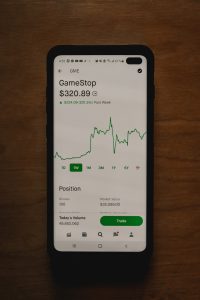The Importance of Backtesting Forex Robot Strategies
Forex trading is a highly competitive and fast-paced market, where traders are constantly looking for ways to gain an edge. One popular tool that traders use to increase their chances of success is the Forex robot, also known as an Expert Advisor (EA). These automated trading systems can execute trades on behalf of the trader, based on pre-determined rules and algorithms. However, before deploying these robots in live trading, it is crucial to perform backtesting to ensure their effectiveness and reliability.
What is Backtesting?
Backtesting is the process of testing a trading strategy or an automated system using historical data. It allows traders to assess the performance of their strategy or robot under various market conditions. By simulating trades on past data, traders can evaluate the profitability and potential risks associated with their strategies.
Why is Backtesting Important?
1. Assessing Strategy Performance: Backtesting allows traders to evaluate the profitability of their trading strategies over a specific period. By analyzing the historical performance, traders can identify the strengths and weaknesses of their strategies and make necessary adjustments before risking real capital. It helps traders avoid the common pitfall of blindly following a strategy without knowing its historical performance.
2. Understanding Risk and Drawdown: Backtesting helps traders understand the potential risks associated with their strategies. By analyzing the historical drawdowns, traders can determine the maximum loss they might incur during adverse market conditions. This understanding helps traders set appropriate risk management measures, such as stop-loss levels and position sizing, to protect their capital.
3. Optimizing Settings: Backtesting allows traders to optimize the parameters of their trading strategies or robots. By testing different combinations of indicators, timeframes, and other variables, traders can find the most profitable settings. This optimization process helps traders fine-tune their strategies and increase their chances of success in live trading.
4. Building Confidence: Backtesting provides traders with the confidence to execute their strategies in live trading. By seeing the positive results of their strategies on historical data, traders can trust their systems and avoid emotional decision-making. This confidence can significantly improve a trader’s discipline and consistency in following their trading plan.
How to Perform Backtesting?
To perform backtesting effectively, traders need access to historical price data and a reliable backtesting software or platform. There are several popular platforms available, such as MetaTrader, which offer built-in backtesting capabilities.
Here are the steps to perform backtesting:
1. Define the Strategy: Clearly define the rules and parameters of the strategy you want to test. This includes entry and exit criteria, indicators used, and risk management rules.
2. Gather Historical Data: Obtain high-quality historical price data for the currency pairs and timeframes you want to test. Ensure that the data is accurate and representative of the market conditions.
3. Set Up the Backtesting Software: Import the historical data into the backtesting software and configure the settings according to your strategy. This includes selecting the currency pair, timeframe, and any additional indicators or variables.
4. Run the Backtest: Start the backtest and let the software simulate trades based on the defined strategy. The software will generate performance reports, including profit and loss, drawdown, and other relevant metrics.
5. Analyze the Results: Analyze the performance reports to assess the profitability and risk of the strategy. Identify any possible improvements or adjustments that can be made to enhance the strategy’s performance.
6. Repeat and Refine: If necessary, make adjustments to the strategy based on the backtesting results and repeat the process. Continuously refine the strategy until satisfactory results are achieved.
Conclusion
Backtesting is an essential step in the development and deployment of Forex robot strategies. It allows traders to assess the performance, profitability, and risk associated with their strategies before risking real capital. By understanding the historical performance, traders can optimize their strategies, set appropriate risk management measures, and gain the confidence needed for successful live trading. So, if you’re considering using a Forex robot, make sure to backtest it thoroughly to ensure its effectiveness and reliability.





